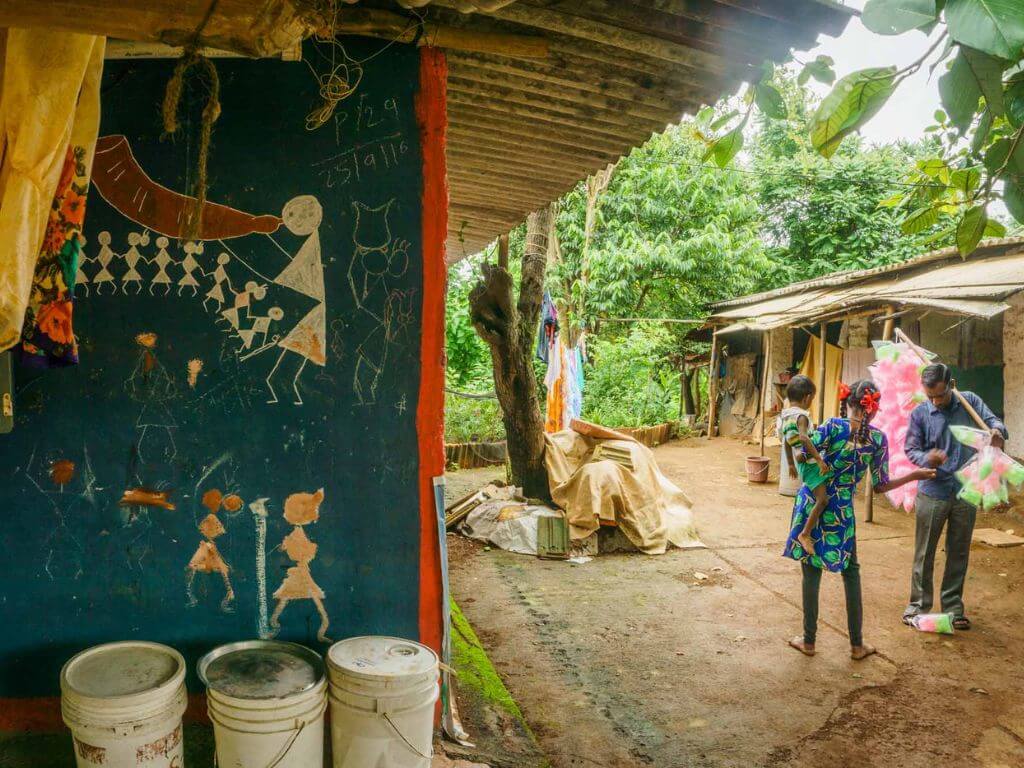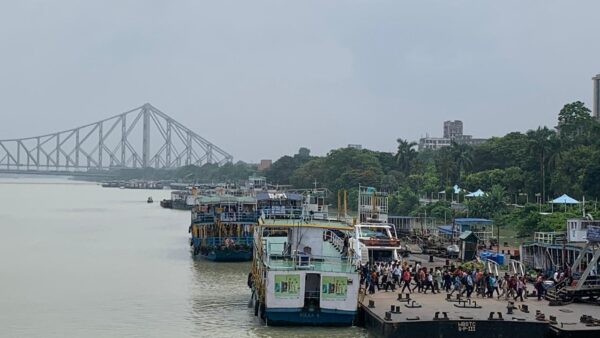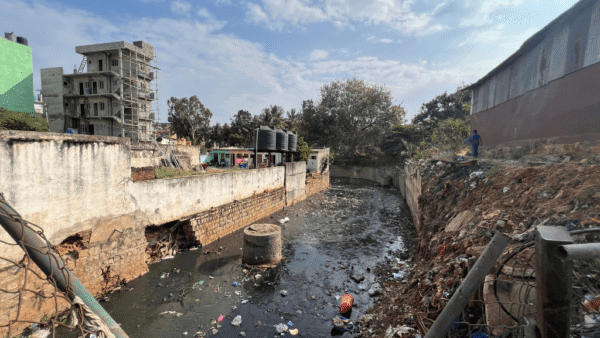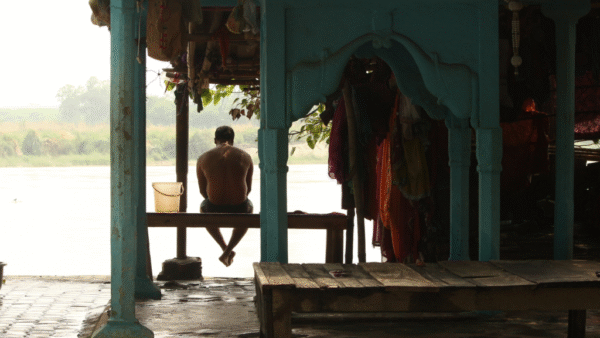It may sound commonplace that a city is made up of myriad occupational groups, communities, and castes who service it, but remain invisible for a variety of reasons. This, however, conceals the larger economic, social and ecological processes constantly at work, not only within the city but also its surroundings, both near and far, which determine the visibility/invisibility of such groups. Most city dwellers have only a fleeting acquaintance with or even curiosity about who these people are and how they survive. This attitude of the city dwellers as well as the urban authorities has serious consequences for millions of people who have been forced to make the city their home, permanently or temporarily, but remain on its margins spatially, economically and socially. Seen but unnoticed.
The ubiquitous reda wala, both mobile and stationary, dhobi and istri wala, goala, chabi wala, knife-sharpeners and others who are rapidly being rendered redundant, nevertheless continue to service a sizeable section of the population. The much-maligned hawkers, who despite all the attempts of the municipal authorities and upper class ‘citizens groups’, refuse to leave the city.
In Mumbai, Kolis are proud of their identity as the original inhabitants and enjoy a distinct place of pride in the city’s socio-cultural map. They too are increasingly threatened by urban development projects as well as mechanised fishing, fast displacing them from their land and waters. However, the Koli question is addressed in another article in this edition.

Photo: Wikimedia Commons
My purpose is to shine the light on adivasi groups who entered Mumbai from the surrounding districts of Maharashtra and, in recent decades, even from other states. For most urban dwellers, adivasis, who constitute 8.8 per cent of the country’s population, are far from their mental horizon. In earlier decades, adivasis migrated largely seasonally to towns and cities to earn a living when no work was available in the villages and returned to their lands during the rains.
Increasing displacement from their land caused by huge development projects like highways, dams, power plants, tourist resorts and farmhouses, worsened by the destruction and degradation of forests, restriction of rights to forest produce for their survival needs, uneconomic land holdings and landlessness, and inadequate employment opportunities in villages have pushed adivasis to cities and towns. An elaboration of this process and its consequences is urgently required.
What is needed is a more nuanced and empathetic understanding of the complex processes unleashed by the neo-liberal policies of globalisation and privatisation, resulting in this reluctant migration. This would provide ample reason for a demand for recognition of their rights to the city to which they turn as a last resort.
Destruction driving them to cities
Notwithstanding the many regional variations, adivasis have lived in isolated places, mainly in forests, practiced jhum or shifting cultivation and collected necessities of life like small timber, firewood, grasses, small animals, vegetables, nuts, weeds, bamboo, fruits, toddy, mahua flowers, and medicinal herbs for their existence. Others, nomadic tribes engaged in cattle-grazing and cattle-breeding, worked as food carriers and lived off crafts like metal work, basket weaving, toy-making, and several others. Throughout the adivasi regions, in the past 200 years, there has been unimaginable destruction of forests, hills, rivers, pasture lands for commercial gains and ‘development projects’ resulting in their alienation from their subsistence base.

Photo: Rewilding Aarey
In more recent times, the Indian government’s economic policy has opened up these rich natural areas to corporates for mining, industry and other huge projects. These have destroyed not only the land, forest, rivers and hills but also the people whose lives were (and still are) inextricably bound with the ecosystem, without bringing much benefit to them. It has transformed nature into an economic resource and people into paupers. It is in this framework that the migration of adivasis to cities must be understood.
In cities and towns, most of them seek work on construction sites, as mazdoors on railway stations, as loaders in small manufacturing units, on development project sites and domestic labour, adding to the huge informal sector but without any protection or rights. They are compelled to live in makeshift and unstable shelters, on top of drains, garbage dumps, on the side of railway tracks, roads, pavements, cramped together with no availability of water, fuel or space for even minimum privacy.
Women have to manage the household, cook, take care of children and family, attend to other domestic chores and face all kinds of sexual harassment from the contractor or supervisor. Most live in constant fear of being driven away by the police and the local inhabitants of the place. This is true for most cities. A middle-aged Warli man from Dahanu taluka, Maharashtra, told me succinctly, “We Warlis don’t like to go to Mumbai. Some young people may want to earn a little money there but we adivasis like to live in our villages, go to the forest, and do our sheti (farming). But when there is nothing here, we have to go to cities. At least you can beg there. Who do you beg from here, everyone is a beggar.”
Mumbai’s adivasis
Located in the north of Mumbai, the twin city of Vasai-Virar has a number of Warlis, Koknas and other adivasi settlements. Many of them do not have electricity connection and pucca houses. They mostly work as labourers including construction labour, factory workers, drivers and others.
Mention must also be made of the Aarey forest in Mumbai, which at India’s independence was 3,262 acres but steadily reduced to around 2,000 acres as land was parcelled off for various projects. More than 10,000 adivasis, Malhar Kolis, Warlis have lived here since early times. The Metro 3 car shed project has already displaced one adivasi hamlet and threatens to destroy the forest which is absolutely essential for the health of millions in Mumbai. Adivasis of Aarey jointly with the concerned citizens of Mumbai, have been protesting against the car shed project – in vain.[1]
A large number of young adivasi women reportedly migrate to cities for work along with their men. However, as women’s studies scholar Indrani Mazumdar points out, most are in construction or domestic work. Young women from Jharkhand and Chhattisgarh in particular, migrate to big cities all over the country as far as Srinagar, away from home and community, experiencing isolation, loneliness, and insecurity. Their presence in Mumbai’s middle and upper-middle class families is noticeable, as caregivers for the elderly and as housekeepers, making it possible for women from these classes to work outside the home.

Photo: Jashvitha Dhagey
In the city but not in its master plans
The semi-nomadic and nomadic tribes were viewed as troublemakers and criminals by the British. The enactment of the Criminal Tribes Act, 1871, a blot in the history of the British administration in India, was repealed after independence and most of them were classified as denotified tribes (DNT) in 1952. Nevertheless, they continue to suffer from poverty, discrimination, and exclusion.
Given that there are few takers for their traditional skills and crafts as musicians, acrobats, toy-makers, metal workers, fortune-tellers, dancers, entertainers, mat and basket weavers in villages, they turn to towns and cities for survival. The unsympathetic and aggressive attitude of the urban inhabitants as well as the authorities towards these communities is illustrated by the cases discussed below.
Dhanraj Dange, currently researching the denotified tribes (DNT) communities, especially Banjara and Kanjarbhat in Ambernath, Navi Mumbai, Kalyan, and Ulhasnagar points out that “given the expansion of urban spaces, they have not come to the city but the city has come to them.” Having lost their original occupation of grazing cattle, as food carriers and messengers, they are reduced to penury. Their settlements are clusters of huts and sheds covered with plastic, with no water connection, no sanitation. They are hemmed in by multi-storied buildings, which ironically is a blessing because they provide employment to women as domestic helps while men look for work in small shops or on construction sites.
The well-known Kalbelia dancers and acrobats from Rajasthan, for example, who provided entertainment at state functions are reduced to begging in cities.Deepa Pawar, herself from the Lohar community, forcefully argues on the basis of her field investigation, that “those who service the city as roadside entertainers, ironsmiths, stone workers, labourers, performers in religious and social functions have no place in cities’ master plans.”
Pawar observes that urban planning in India has been the exclusive domain of the ‘dominant’ groups and has ignored the real ‘city-builders’ who provide cheap labour and other services. Most of these groups do not even get access to slums, they live on roadsides in makeshift tents, and end up in police custody on the basis of prejudices and stereotypes.
The precarity and vulnerability of Bajaniyas (a wandering minstrel tribe that made a living by playing music at weddings and other functions) is vividly outlined by author Dilip D’Souza in his book Branded by Law: Looking at India’s denotified tribes. The land on which they live, Mani Nagar, was given to them as a reward for their performance at a royal wedding by the Maharaja of Baroda nearly 80 years ago.
However, with the expansion of Vadodara, Mani Nagar became a part of the city. Multi-storied buildings, shops and all the symbols of urban growth appeared and a section of the Bajaniyas who had built themselves homes and settled there were forced to relocate by the side of a foul-smelling stream. The municipality demolished about half the houses in the colony to make way for the buildings. Facilities like school, toilets, healthcare, clean running water remain unavailable. As D’Souza points out, they are obsessed with acquiring ‘papers’ that remotely resemble an official document which shows their entitlement to the land.

Photo: Sanjiv Valsan
Lowest in city’s hierarchy
In a similar case, the rassi walas (rope makers) living in settlements in Mulund and Ghatkopar suburbs of Mumbai, experience vulnerability and discrimination even after 60 years. Their ancestors are believed to have migrated to Mumbai as well as other parts of India in Punjab, Haryana, Madhya Pradesh mainly because of droughts. A survey of the settlement in Ghatkopar reveals that their main occupation continues to be rope making, and a family’s monthly income is sometimes as low as Rs 1,500 and at its highest Rs 7,000. Sociologists Shashi Mishra and Sonam Mansukhani observe that few children go to school since most schools are unwilling to enrol children without a fixed parental income as well as the stigma they carry as denotified tribes.
The main problems faced by these communities are forced evictions as a result of demolition of their settlements. Echoing Pawar, they argue, “the city’s master plan does not do much to deal with issues related to migrants. The strategies for integrating them should focus on identity proofs, ensuring voting rights, facilitating access to legal aid, access to food, housing, education, public health, and organised credit.”
D’Souza’s book is a testimony to the continuing prejudices among the police, who, he believes, find an easy scapegoat in persons from these communities for big and small crimes committed in their areas. The stigma of criminality carried by these communities for nearly a century and a half refuses to wash off. Insecurity, harassment, and extreme poverty describe their condition in cities.
In the absence of substantial data, one must rely on the few studies and reports which provide some insights into the conditions of living of a section of our urban dwellers. Evidently, they survive at the lowest level because of the callousness of the government, the municipalities, the police, and the local population. They constitute an alarmingly huge number of unnoticed and unacknowledged people in urban India – without rights, entitlement, security and respect – occupying the lowest status in the city’s hierarchy. With the loss of community bonds, traditional knowledge and culture, these groups experience isolation, and insecurity while the city offers none of the advantages and benefits that it is expected to provide. Ironically, some lose their identity and suffer from complete anonymity, for others, their identity refuses to disappear.
One may recall Patrick Geddes, sociologist, ecologist, urban planner, who likened the city to a tapestry constantly in the process of being woven. Obviously in our case, some threads have been excluded from the grand design.
Dr. Indra Munshi, is retired Professor and Head, Department of Sociology, University of Mumbai, which was set up by Sir Patrick Geddes as the first Professor and Head in 1919. She is also the executive editor of the Indian Journal of Secularism (IJS) brought out by the Centre for Study of Society and Secularism (CSSS), Mumbai. Her most recent book is “Patrick Geddes’ Contribution to Sociology and Urban Planning – Vision of a City”.
Cover photo: The settlement of 100 homes in Khambachapada, Aarey forest in Mumbai, receives only an hour’s supply of water through the civic pipeline.
Photo by Sanjiv Valsan.




